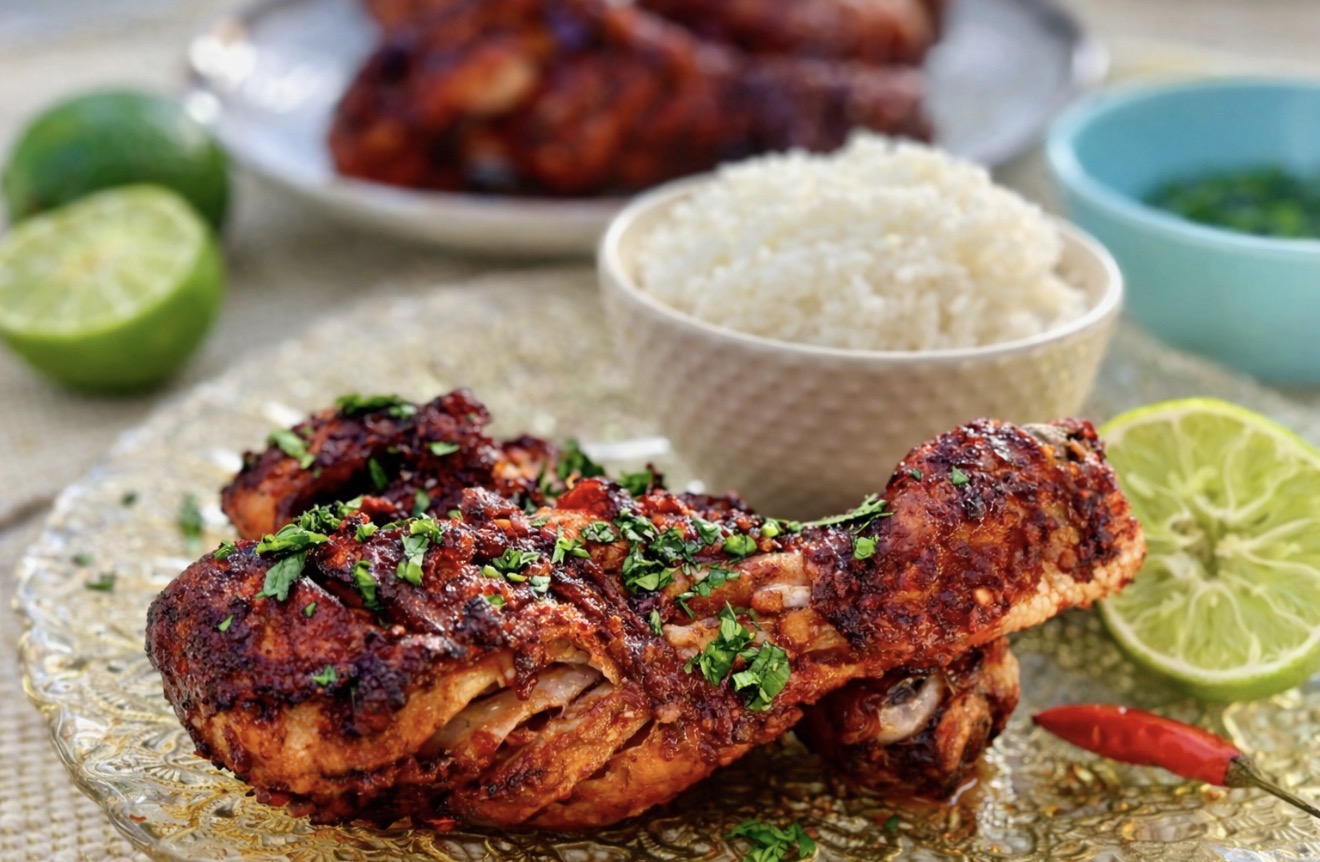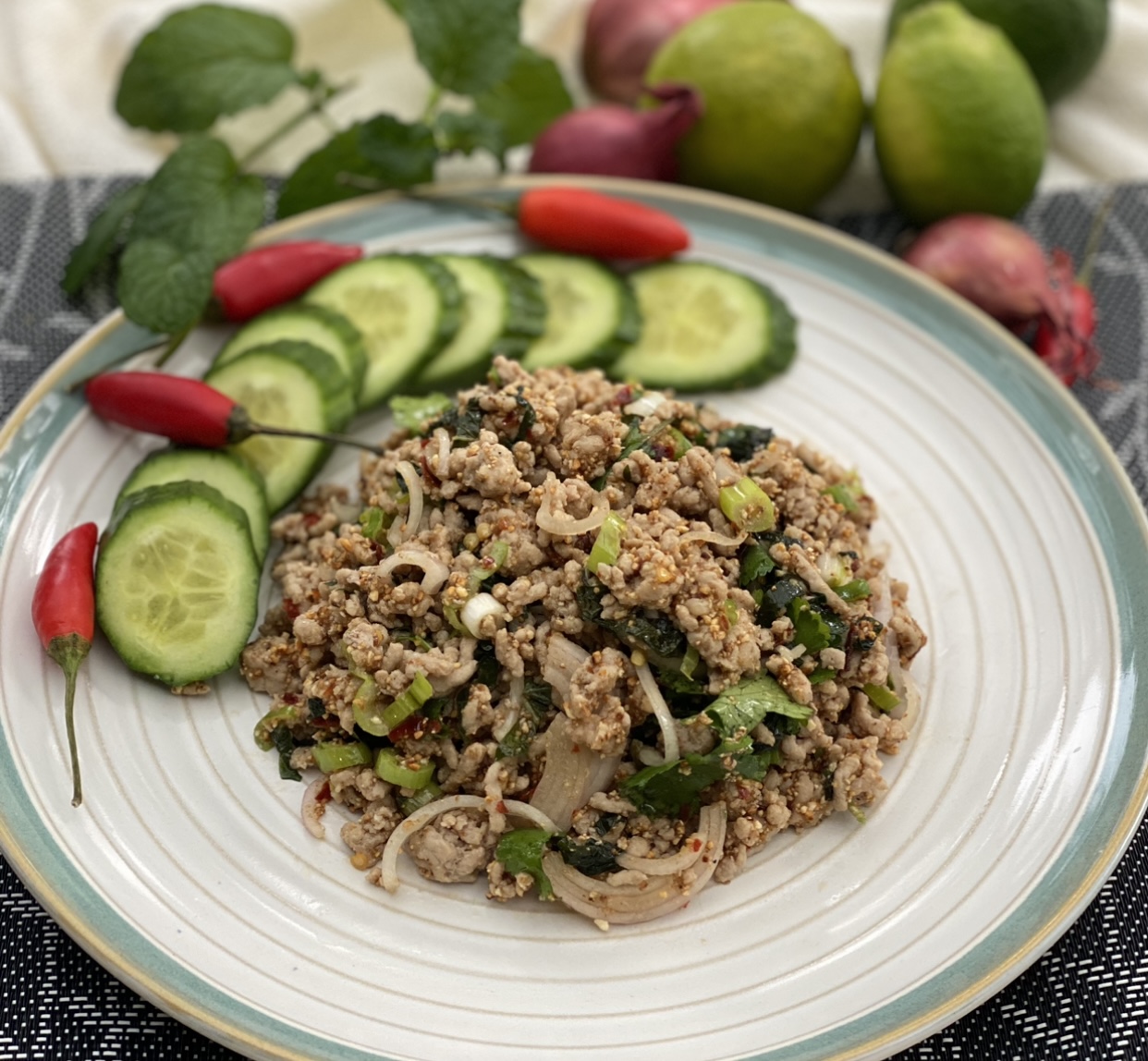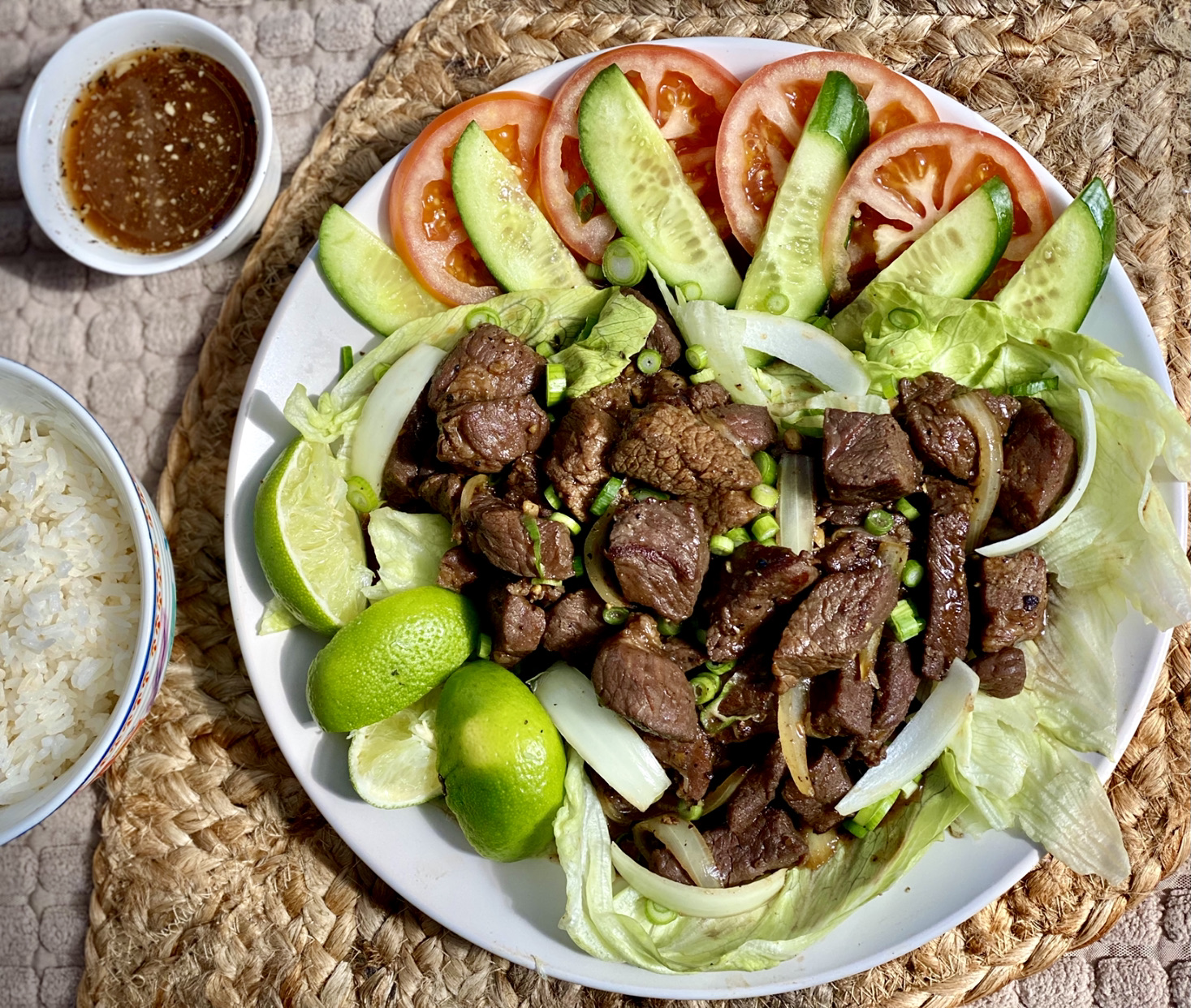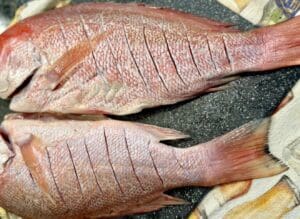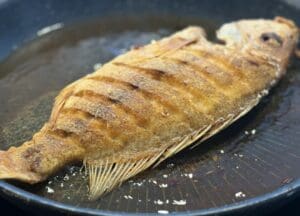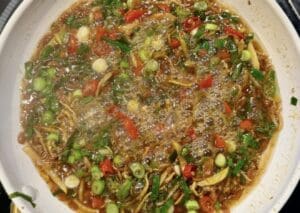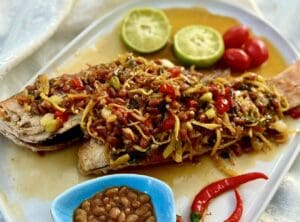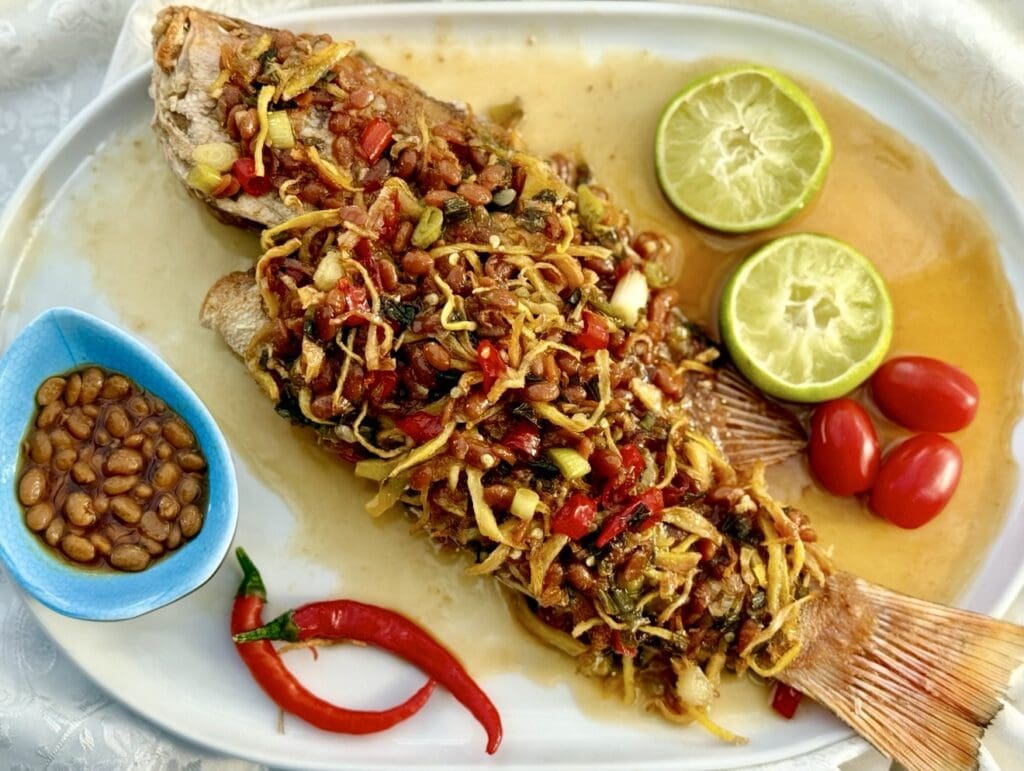
You must try this Cambodian Fried Fish. Whole crispy fried fish in an aromatic sweet and sour sauce with loads of ginger and salted soybeans
Spectacular way to serve whole fish!
Just when I thought the constant sickness from preschool was over, Kai caught a cold. Last week, his kindy teacher called me to pick him up early from school. When I arrived, he ran to greet me with a warm hug, and then rubbed his snotty nose along my jumper. Ah, the joys of parenthood!
On the positive side, Kai and I get to spend some downtime together. I envisioned a couple of lazy days spent sleeping in and cuddling under warm blankets and watching some Disney classics. HOWEVER, my 5-year-old had other plans. He religiously hopped out of bed at 7am and had activities planned out for us. Just so we’re clear, those activities were anything but relaxing ? Ah, what I would give to have his daily enthusiasm and energy!
Much to my delight, I didn’t get Kai’s cold this time! So it’s back in the kitchen for me with this amazing Cambodian Fried fish served with ginger and salted soybeans.
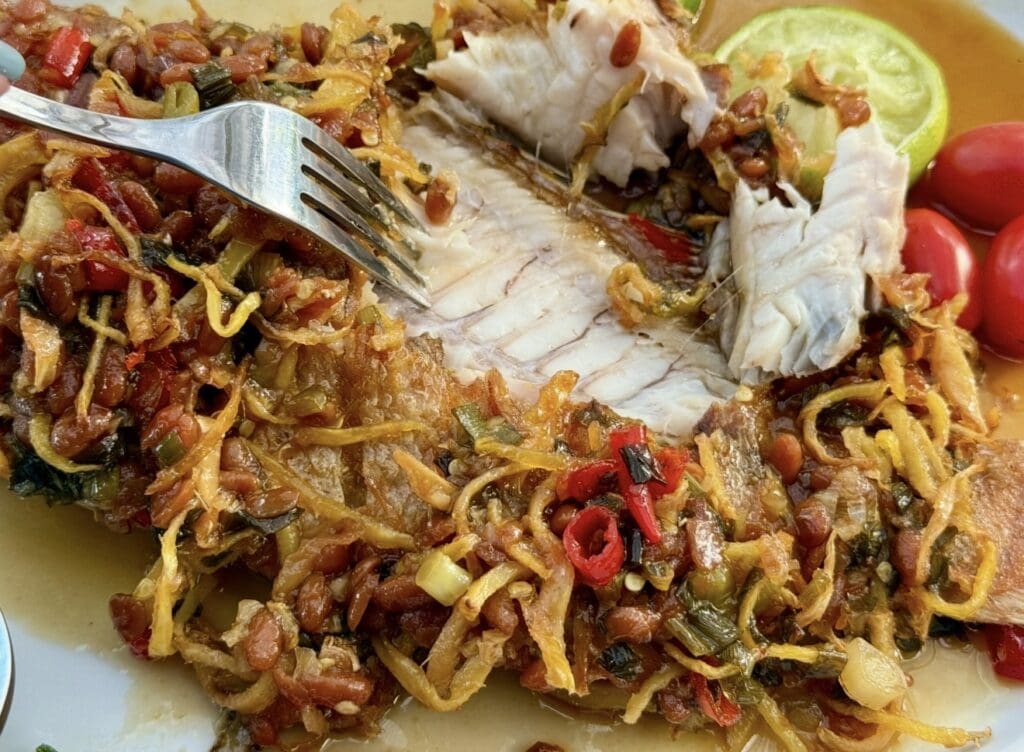
We learned about this dish while taking cooking classes in Siem Reap, Cambodia. Though this dish is simple and uses few ingredients, the result is nothing short of being spectacular. Golden crispy and flaky fried fish served with sticky ginger and salted soybean sauce! You’re guaranteed a flavour explosion of sweet, sour, salty, savoury, and spicy!
If you’re able to find a jar of salted (fermented) soybeans from an Asian grocer, then this recipe is calling your name. Salted soybeans, used as a condiment or ingredient, give a unique and complex umami flavour to East and Southeast Asian dishes.
Cambodian fried fish with ginger and soybeans
Let’s talk about salted soybeans
Fermented or salted soybeans is a savoury and salty ingredient and condiment widely used in East and South Asian cuisines. You simply cannot make this dish without a jar of salted soybeans because it’s the key ingredient for this dish.
What does salted soybeans taste like?
I usually try to avoid using umami to describe flavour, but I have to use it here. Salted soybean is rich in umami flavour! It’s also salty, with a soft texture.
Where can I buy salted soybeans?
Depending where you, salted or fermented soybeans can be tricky to find, even in Asian grocers. However, you should be able to find a jar online. Here is how a jar of salted soybeans looks like. These are the list of ingredients on Yeo’s Salted Soy Beans: Soy Bean (70%), Soy Sauce (Water, Soy Bean, Salt, Wheat), Sugar, Flavour Enhancers (E631, E627).
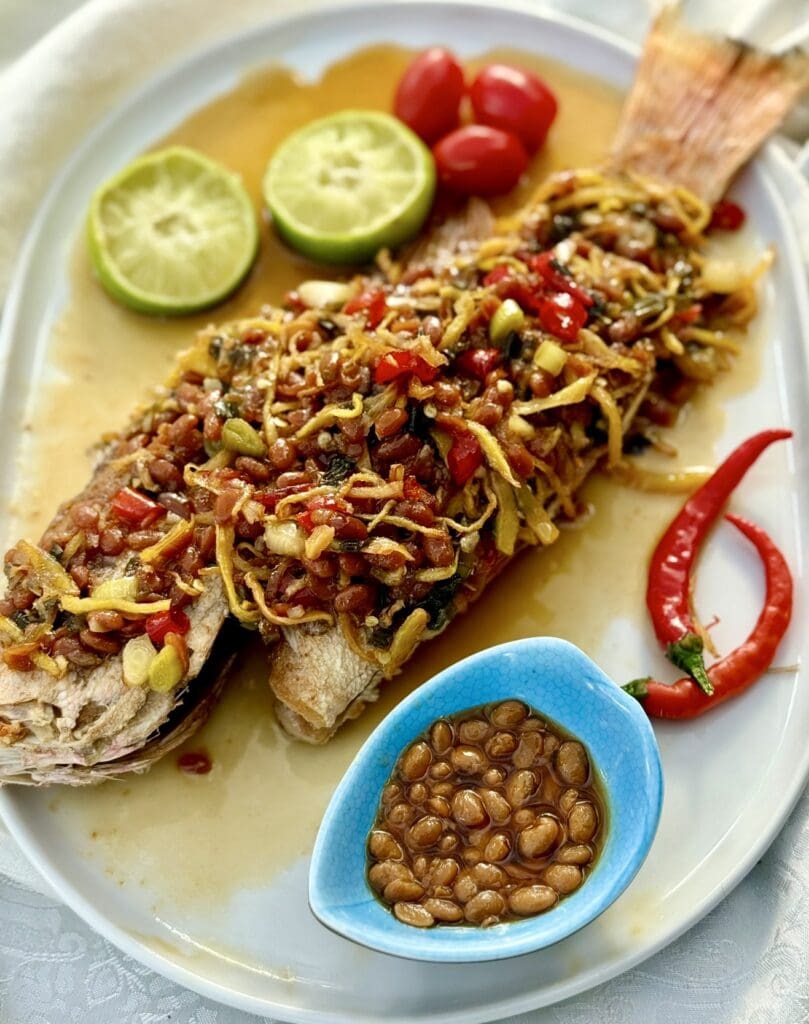
What fish should I use for frying?
Cambodians utilise the plentiful fish in their region, which includes tilapia, snapper, snakehead, carp, and catfish. Any fish with semi-firm flesh would work, such as snapper, bream, barramundi, and Seabass. Prefer to use no-fuss fish fillets? Swap the whole fish for 1kg / 2.2lbs of fillets.
How to serve Cambodian Fried Fish with ginger and salted soy beans?
You’re going to need plenty of steamed rice because that’s the Cambodian way. Simple, delicious and always flavourful.
More tantalising Southeast Asian recipes to try:
Ingredients for Cambodian fried fish
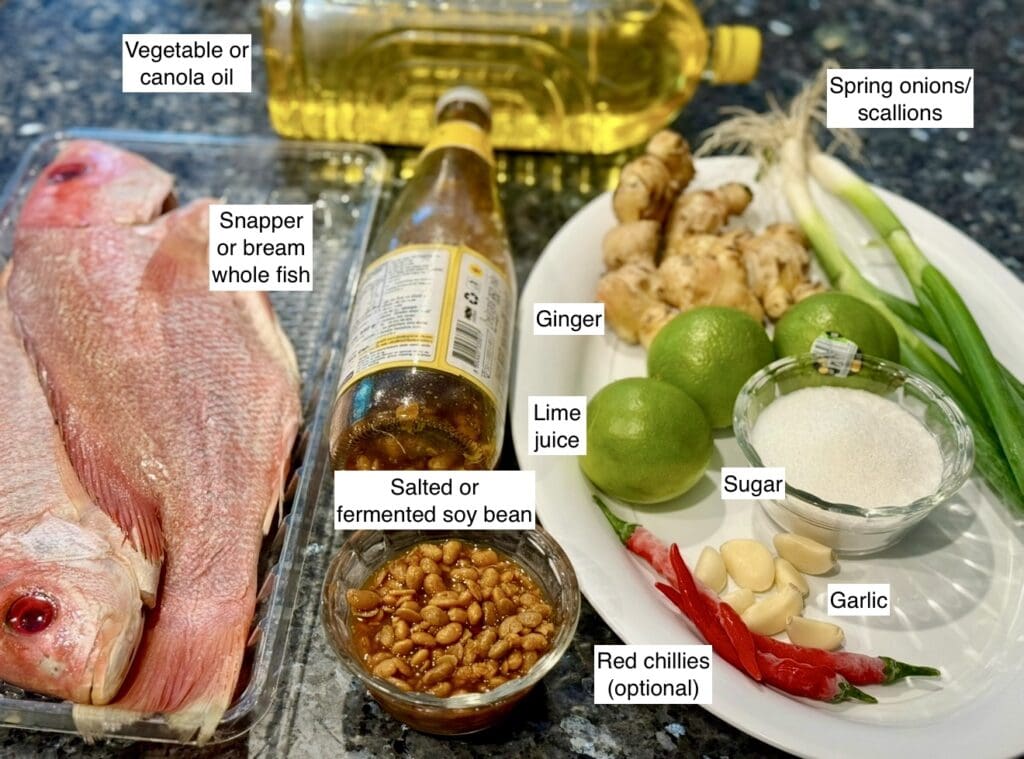
Whole fish. – You’ll need one or two whole fish weighing approximately 1.2-1.3kg / 2.6-2.9lbs (total weight before cleaning). If you don’t have extra large frying pans, opt for smaller fish. Request that your fishmonger clean the fish, removing scales and guts. I used baby snapper, but any firm and flaky fish like bream, seabass, barramundi, tilapia, snakehead, carp, or catfish will work. If you’re not a fan of whole fish, you can swap for 1kg / 2.2lbs boneless fish fillets.
Frying oil – I used vegetable oil, but any neutral-tasting oil with a high smoke point (doesn’t burn at high temperatures) would work. Canola, rice bran, sunflower or corn oil are great choices for deep frying.
Ginger – This recipe calls for loads of ginger, but it won’t overwhelm the dish because it’s fried until the edges are crispy. Julienne the ginger into thin matchsticks pieces, but it’s okay if they’re uneven. Look at mine! ?
Salted soybeans (fermented soybeans) – Depending where you salted soybeans they can be tricky to find, even in Asian grocers. The salted soybean comes in jars or glass bottles with brine. We need plain salted fermented soybean, and not the ones with added flavours. Here is how a jar of salted soybeans looks like. Since salt levels range from each brand, taste and add salt only after cooking is almost complete.
Red chillies – Traditionally, this dish isn’t spicy; however, adding chilies makes it even more delicious for spice lovers.
Subscribe to 3CatsFoodie’s FREE Newsletter

For the latest recipes and other fun stuff!
How to make Cambodian Fried fish with ginger and soybeans
Step-by-step guide with photos
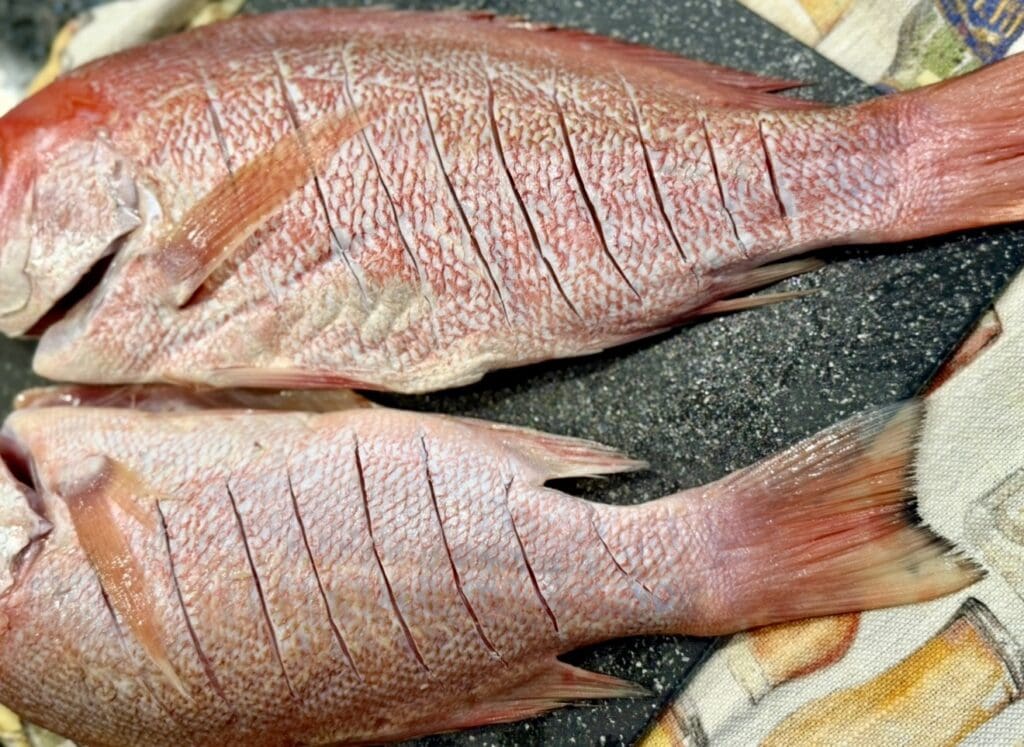

Fry the fish: Thoroughly pat the fish dry with paper towels, including the head and tail. This will help keep the oil from splattering while the fish fries. With a sharp knife, make slashes to the bone on both sides of the fish (refer to my photo or video guide)
In a large, heavy-based pan, pour enough oil to reach a depth of about 1 inch (2.5cm). Heat the oil over medium-high heat until it reaches 180°C (350°F). Alternatively, test the oil’s readiness by adding a small piece of bread; if it bubbles and sizzles, it’s ready.
Carefully place the fish in the oil, away from yourself, then fry for 4–6 minutes on each side, or until crispy and cooked through (frying time depends on the fish size). Place the fish on a cooling rack for 5 minutes, then transfer onto a serving platter.
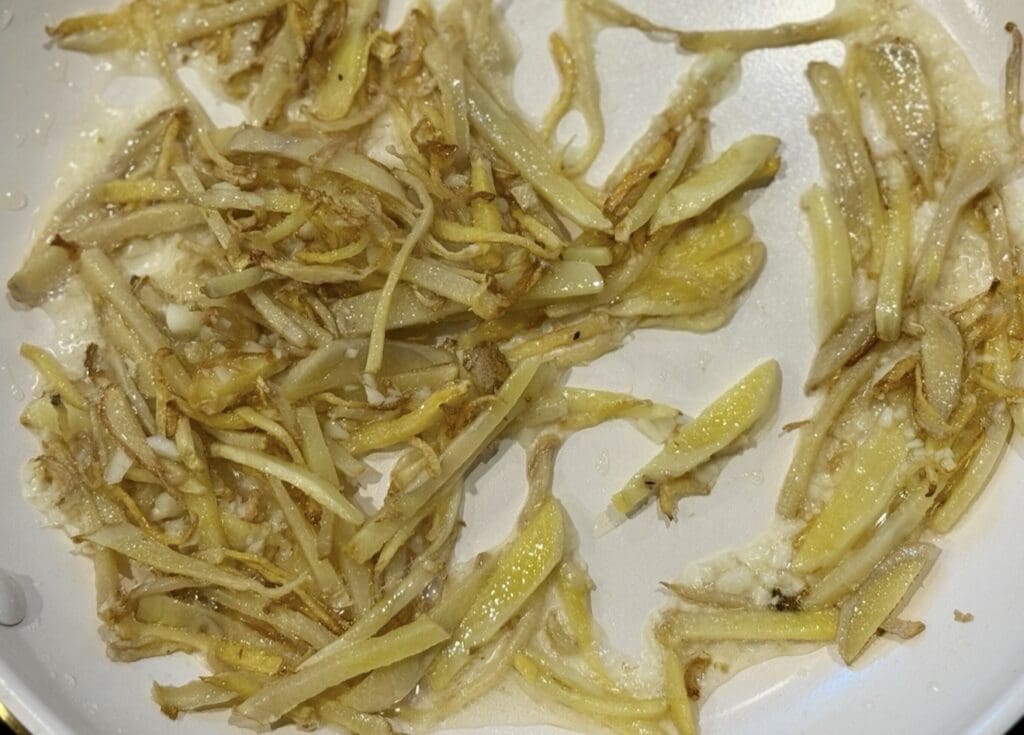
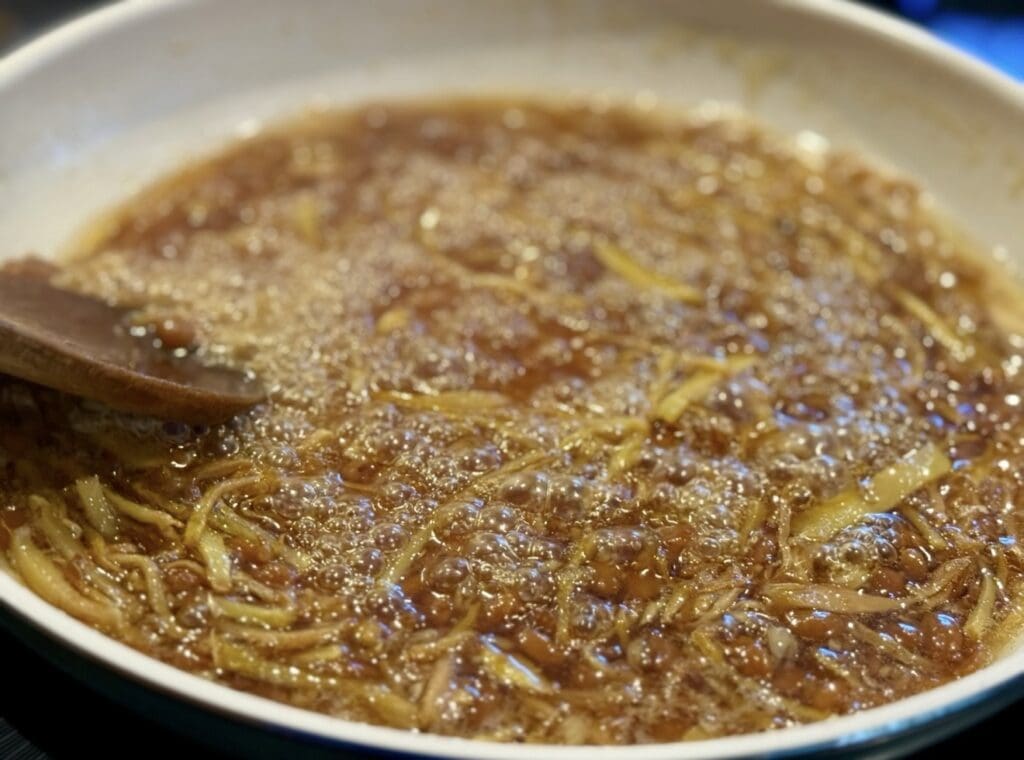
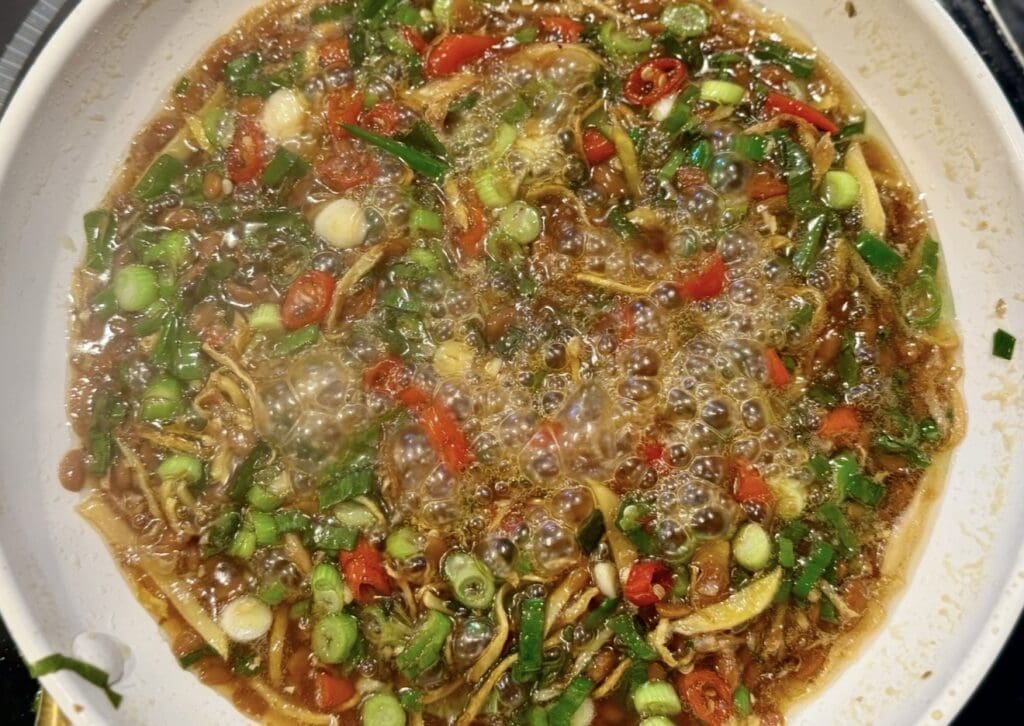

Make the sauce: Heat oil in a frying pan over medium-high heat. Add ginger and saute until lightly browned (about 2 minutes). Stir in the garlic and fry for a minute, then add the salted soybeans, sugar and lime juice. Regularly stir the sauce until it becomes a thin syrup (around 3–5 minutes), then add the spring onions and chillies (if using). Let the sauce cook for another minute, then have a taste of the sauce. Season the to taste by adding salt and pepper (if needed). If it is too sweet, add a little more lime juice; if it is too tart, add a touch of sugar.
Either spoon or pour the sauce onto the fried fish, then serve immediately with hot steamed jasmine rice.
How to store Cambodian fried fish
Leftovers – This Cambodian fried fish dish is best served immediately. However, it’ll keep for 2 days. Allow the fish to cool completely at room temperature, then transfer into a sealed container and store in fridge.
I’ve used a third-party application to calculate the calories and nutritional information, so please use this as an approximate guide only.
Cooking measurements are in Australian standard spoon and cup measurements. For specific details and conversions, visit our Australian Cooking Measurements page.
I would love your feedback and support if you made this recipe. To do this, please rate this recipe and provide a comment by scrolling down this page or by clicking that green circle on the bottom left. An email address is required (for spam), but it won’t be published. I would also love to see your dish, so don’t forget to tag me on my Instagram account ‘3catsfoodie’
Cheers – Cat T
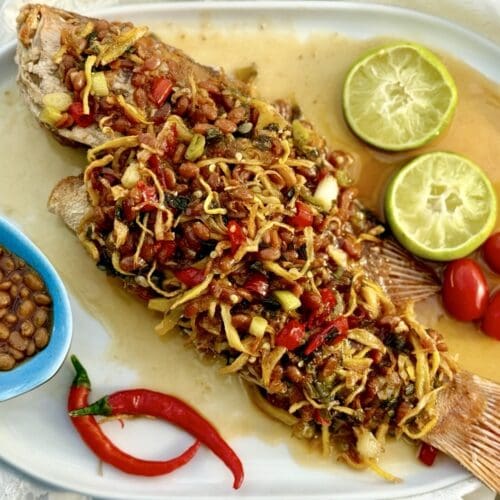
Cambodian Fried fish with Ginger and Soybeans
Video
Ingredients
- 1 or 2 (1.2-1.3kg / 2.6-2.9lbs) whole snapper, cleaned (NOTE 1)
- vegetable or canola oil for frying (NOTE 2)
Ginger and soybean sauce
- 2 tbsp (40ml / 1.4floz) vegetable oil
- 150g / 5.3oz ginger, peeled and julienned (NOTE 3)
- 5 garlic cloves, minced
- ½ cup (140g / 4.9oz) salted or fermented soybeans & 1-2 tbsp of brine (NOTE 4)
- ½ cup (120g / 4oz) white sugar
- ½ cup (125ml / 4.2floz) fresh lime juice, approx. 4 to 5 limes
- 2 spring onion/ scallion stalks, sliced thinly
- 2 to 3 Optional – large red chillies, sliced thinly (NOTE 5)
Instructions
- Fry the fish: Thoroughly pat the fish dry with paper towels, including the head and tail. This will help keep the oil from splattering while the fish fries. With a sharp knife, make slashes to the bone on both sides of the fish (refer to my photo or video guide)

- In a large, heavy-based pan, pour enough oil to reach a depth of about 1 inch (2.5cm). Heat the oil over medium-high heat until it reaches 180°C (350°F). Alternatively, test the oil's readiness by adding a small piece of bread; if it bubbles and sizzles, it's ready.Carefully place the fish in the oil, away from yourself, then fry for 4–6 minutes on each side, or until crispy and cooked through (frying time depends on the fish size). Place the fish on a cooling rack for 5 minutes, then transfer onto a serving platter.

- Make the sauce: Heat oil in a frying pan over medium-high heat. Add ginger and saute until lightly browned (about 2 minutes). Stir in the garlic and fry for a minute, then add the salted soybeans, sugar and lime juice. Regularly stir the sauce until it becomes a thin syrup (around 3–5 minutes), then add the spring onions and chillies (if using). Let the sauce cook for another minute, then have a taste of the sauce. Season the to taste by adding salt and pepper (if needed). If it is too sweet, add a little more lime juice; if it is too tart, add a touch of sugar.

- Either spoon or pour the sauce onto the fried fish, then serve immediately with hot steamed jasmine rice.



